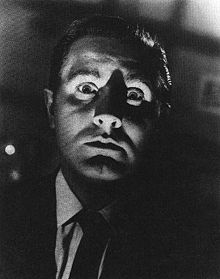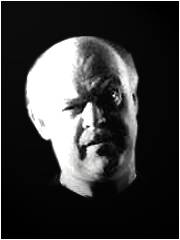Info About The Saint TV Series:
As a result of the strong performance in the US of the first two black-and-white series in first-run syndication, NBC picked up the show as a summer replacement on its evening schedule in 1966. The programme therefore ended its run with both trans-Atlantic prime time scheduling and colour episodes. It also proved popular beyond the UK and US, eventually showing in over 60 countries, and made a profit in excess of £350m for ITC.[2][3][4] With almost 120 episodes, the programme is exceeded only by The Avengers as the most productive show of its genre produced in the UK.
Series overview
The Saint starred Roger Moore as Simon Templar. The fictional detective-cambrioleur was created by Leslie Charteris in the 1920s and featured in many novels and novellas over the years. Moore drove a white Volvo P1800 on the show. Moore's portrayal of Templar was considered a training ground for his later work as James Bond. He was reportedly offered the role of 007 at least twice during the run of the series, but had to turn it down both times due to his television commitments. In one early episode of the series, a character actually mistakes Templar for James Bond.
Roger Moore had earlier tried to buy the production rights to the Saint books himself and was delighted to be able to play the part. Moore eventually became co-owner of the show with Robert S. Baker when the show moved to colour and the production credit became Bamore Productions. Most of the wardrobe Moore wore in the series was his own.
Although Moore had a few recurring co-stars, most notably Ivor Dean who took over the role of Teal as Templar's nemesis/reluctant ally, Inspector Teal, he was the only actor to feature for the entire run of the show. This was in keeping with the later format of the Charteris novels wherein the Saint usually worked alone. In early books, however, Templar had a team of compatriots, as well as a regular girlfriend, but these characters do not appear in the programme. Inspector Teal had been previously played by Norman Pitt and Wensley Pithey. From the episode "Iris" (7 Nov 1963), Ivor Dean took over. He had previously starred as a bad guy in the series, in the "Hollywood" episode.
The Saint began as a straightforward mystery series, but over the years adopted more secret agent and fantasy-style plots. It also made a well-publicised switch from black-and-white to colour production midway through its run. The early episodes are distinguished by having Moore break the fourth wall and speak to the audience in character at the start of every episode. With the switch to colour this gimmick was replaced by simple narration. Invariably, the pre-credits sequence ended with someone referring to the Saint as "the famous Simon Templar", at which point an animated halo appeared above Templar's head as the actor usually looked at the camera or directly at the halo. Some episodes such as "Iris" broke away from this formula and had Templar address the audience for the entire pre-credits sequence, setting up the story that followed.
Many episodes were based upon Charteris' stories, although a higher percentage of original scripts appeared as the series progressed ("Queen's Ransom" was both the first colour episode and the first episode not to be based on a Charteris work). The novel Vendetta for the Saint, credited to Charteris but written by Harry Harrison, was one of the last Saint stories to be adapted. Some of the later stories were novelised and published as part of the ongoing series of The Saint novels, such as The Fiction Makers and The People Importers. The first of these books, which gave cover credit to Charteris but were actually written by others, was The Saint on TV, and the series of novelisations continued for several years after the television programme had ended.
The b/w series were first syndicated in the US by NBC affiliate stations in 1967 and 1968, and 32 of the 47 colour episodes were Networked by NBC from 1968 to 1969, and has since played in syndication in the US for many years after (the 70s sequel Return of the Saint aired to high ratings on CBS in 1979/80). Most series are available on DVD in North America. A pair of two-part episodes from series 6, Vendetta for the Saint and The Fiction Makers, were compiled into feature films and distributed to theatres in Europe, and often show up on late-night television in America. They are also available on DVD.
In 1978, the series was revived as Return of the Saint, starring Ian Ogilvy as Templar. Moore never played the role again after 1969, though he can be heard speaking on a car radio during the 1997 film The Saint, starring Val Kilmer as Templar. Although the film bore absolutely no similarity to the books or either TV series (and indeed carried no credit for Leslie Charteris), the executive producer of the film was Robert S. Baker, who developed and produced both The Saint and Return of the Saint.
In the UK, ITV4 is currently broadcasting color episodes. In the USA, FamilyNet and RTV are airing both the black and white and color episodes.
Filming locations
In the TV series The Saint lives in London, though the exact address is never revealed, and he is seen traveling to locations across London, the UK, and around the world. In reality this was not the case, as the whole series was shot at Associated British Elstree Studios in Hertfordshire,[5] with very few scenes shot on location outside of the Elstree Studios site. This was achieved by making extensive use of the sets at Elstree, early blue screen technology to simulate different locations in the background, painted or projected backdrops, as well as revolving painted backdrops for moving scenes. There are a few exceptions such as the extensive location shoot on the island of Malta for 'Vendetta for the Saint'. Look-alikes were used for location shoots where The Saint is seen in the distance entering a well known building or driving past the camera at speed.[6]
Fan Club
The Saint and its books have a fan club created originally by Leslie Charteris for the fans of the series. The club falls under the control of honorary chairmen Roger Moore and Ian Ogilvy. The club marks events such as the publication of books or other information on the series.
Episodes
Main article: List of The Saint episodes
The black-and-white episodes of The Saint were made in two production runs, the first, of 39 episodes, was split into two separate series on transmission, and the second, of 32 episodes, again split into two series on transmission. Series 5, the first to be produced in colour, consisted of a production run of 32 episodes. The second colour production run consisted of 15 episodes, and has a revamped theme tune marking it out from the first batch of colour episodes."The Fiction Makers" from Series 5 was edited into a two-parter using the revamped theme for inclusion in series 6, as was "Vendetta for the Saint". However, during transmission of series 5, transmission of the episodes caught up with production, meaning repeats of some of the black-and-white episodes had to be slotted into the schedule to slow the broadcast of new episodes. This series started transmission half way through production, leading to only 26 of the episodes being screened. The three unscreened episodes plus "The House on Dragon's Rock", which in some regions was not broadcast because it was thought unsuitable for children, were then mixed in with series 6 for transmission.
DVD releases
A&E Home Video released The Saint on DVD in Region 1. They have released two sets of monochrome episodes, the first with three discs, the second with four. Each disc contains four episodes, meaning only 28 of the monochrome episodes are available. All of the colour episodes have been released in seven two-disc sets, as well as in one 14-disc "Megaset." The two-part episodes are only in movie form. These are currently out of print.
In Region 2, Network DVD has released two multi-disc sets, with all the monochrome episodes available in an 18-disc set, and all the colour ones in a 14-disc set. The colour set includes the theatrical versions of the two double-length stories, as well as the original 48-minute two-part versions. Also included are a 40-minute documentary and isolated music tracks. Prior to this, Carlton Video had released four separate discs, the first one with the first two episodes, and the rest with four episodes each. There is also a 10-disc set that repackages the previous four discs alongside six more, containing the first 39 monochrome episodes. The Monochrome and Colour sets are the best out there, in terms of picture, audio quality and special features.
In Region 4, Umbrella Entertainment released the entire series in Australia, in five boxed sets of six discs each. These are in PAL format, but with no region code. The boxsets feature numerous extras including a series of audio commentaries recorded in 2004 with surviving members of the cast and crew, ranging from guest stars through to Roger Moore.
Remake
In September 2009, it was announced that The Saint is to be remade for television by Vancouver-based studio Brightlight Pictures. Scottish actor Dougray Scott was lined up to play Simon Templar.[7] However, no series eventuated.
It is now reported James Purefoy will play The Saint in a remake, production of which was scheduled to being in July 2011.[8] As of January 2012, however, it's unclear whether the series is proceeding.
Extract Source: http://en.wikipedia.org/wiki/The_Saint_(TV_series)
More Info: http://www.imdb.com/title/tt0055701/




.jpg)
.jpg)

+001.jpg)
+001.jpg)
+001.jpg)
+001.jpg)
+001.jpg)
+001.jpg)
+001.jpg)
+001.jpg)
+001.jpg)
+001.jpg)
+001.jpg)
+001.jpg)
+001.jpg)
+001.jpg)
+001.jpg)
+001.jpg)
+001.jpg)
+001.jpg)
+001.jpg)
+001.jpg)
+001.jpg)
+001.jpg)
+001.jpg)
+001.jpg)
+001.jpg)
+001.jpg)
+001.jpg)
+001.jpg)
+001.jpg)
+001.jpg)
+001.jpg)
+001.jpg)
+001.jpg)
+001.jpg)
+001.jpg)
+001.jpg)